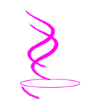3.1.1 | THE CENTRAL PROCESSING UNIT (CPU) |
|
Topics from the Cambridge IGCSE (9-1) Computer Science 0984 syllabus 2023 - 2025.
|
OBJECTIVES
3.1 (a) Understand the role of the central processing unit (CPU) in a computer (b) Understand what is meant by a microprocessor • The CPU processes instructions and data that are input into the computer so that the result can be output • A microprocessor is a type of integrated circuit on a single chip |
ALSO IN THIS TOPIC
YOU ARE HERE | 3.1.1 COMPUTER ARCHITECTURE 3.1.2 COMPUTER ARCHITECTURE 3.1.3 COMPUTER ARCHITECTURE 3.1.4 COMPUTER ARCHITECTURE(CIE) 3.1.5 COMPUTER ARCHITECTURE 3.2.1 INPUT AND OUTPUT DEVICES 3.2.2 INPUT AND OUTPUT DEVICES 3.2.3 INPUT AND OUTPUT DEVICES 3.3 DATA STORAGE 3.4 NETWORK HARDWARE REVISION CARDS TOPIC 3 KEY TERMINOLOGY TOPIC 3 ANSWERS TOPIC 3 TEACHER RESOURCES TOPIC 1 TEACHER RESOURCES (CIE) |




